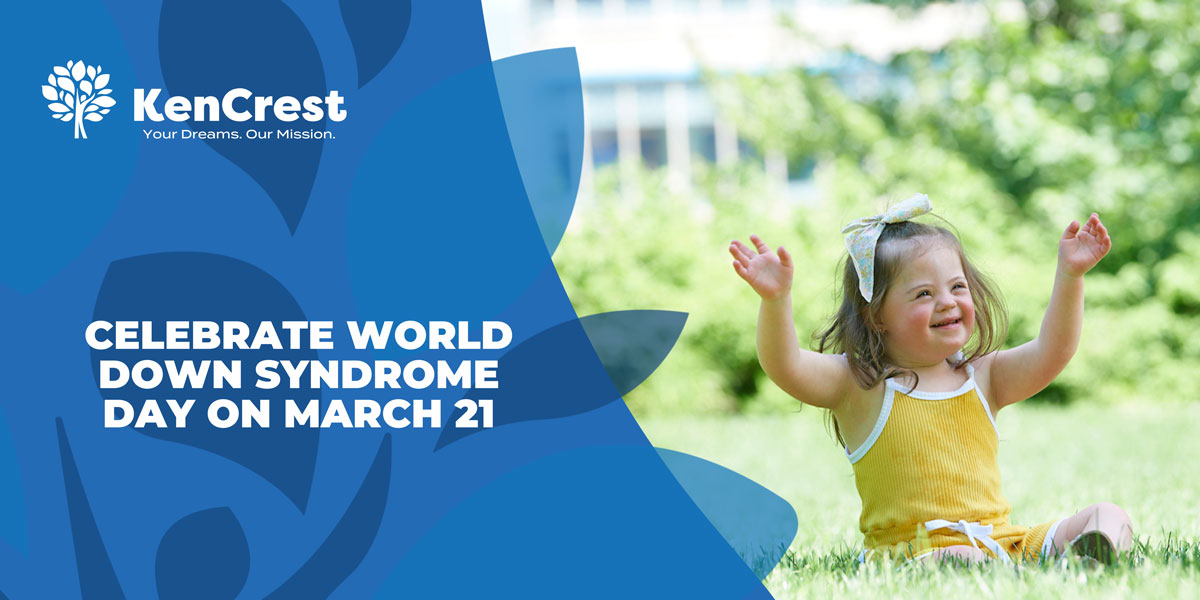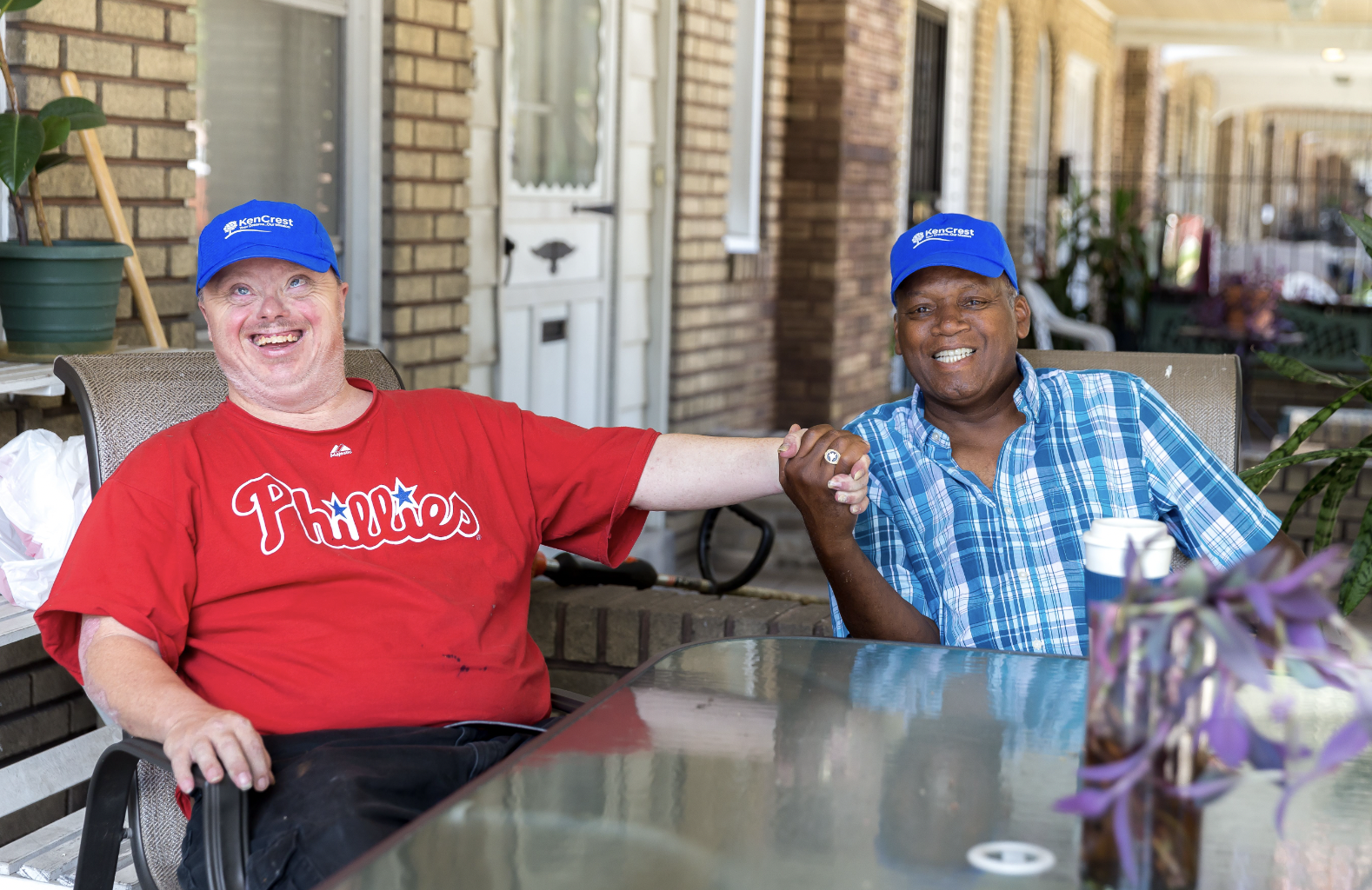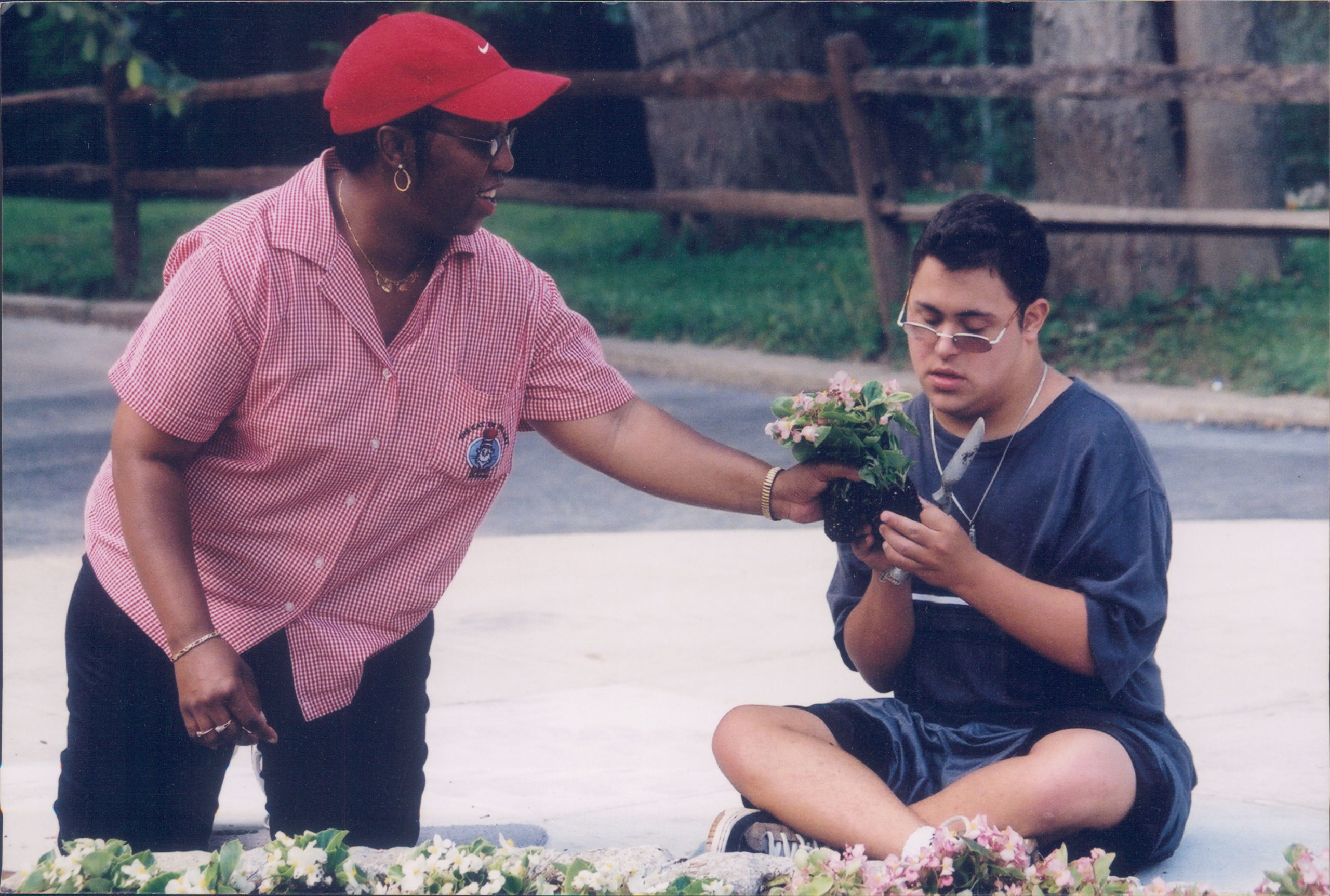Celebrate World Down Syndrome Day on March 21

March 21 is World Down Syndrome Day, and this year, celebrate someone in your life with the genetic condition with KenCrest.
By Sydney Kerelo
For decades, people with Down Syndrome were hidden from the public’s eyes until a few years ago when a Puerto Rican woman with the genetic condition became Victoria’s Secret model. Sofia Jirau became the first Victoria’s Secret model with Down Syndrome, and since her grand debut in February 2022, Down Syndrome awareness has spread like wildfire.

Lifesharing partners Bobby and Andy
But what exactly is Down Syndrome?
According to World Down Syndrome Day’s website, Down Syndrome is a naturally occurring chromosomal arrangement and is universally present across racial, gender, or socioeconomic lines in approximately 1 in 800 live births.
A genetic condition occurs when an extra copy of a specific chromosome exists. The extra chromosome can affect a person’s physical features, intellect, and overall development (Medical News Today, n.d.).
A baby is typically born with 46 chromosomes, but when they have Down Syndrome, they develop an extra chromosome copy, which changes their body and brain development. Standard physical features include almond-shaped eyes, a flattened face, a short neck, small ears, tiny white spots in the iris, small hands and feet, and poor muscle tone or loose joints.
What causes Down Syndrome?
While a child’s genes cause Down Syndrome, it does not mean the condition is genetic. An error between the sperm and egg, when the genetic information that forms a child first combines and copies, causes the condition (Medical News Today, n.d.).
According to a Centers for Disease Control (CDC) study done between 1979 and 2003, the percentage of babies born with this genetic condition increased by about 30 percent due to the mother’s age (Centers for Disease Control, n.d.).
Down Syndrome is one of the most common chromosomal disorders; approximately 6,000 babies (1 in every 700) a year are born with the genetic condition.
What are the different types of Down Syndrome?
The CDC states that a person can have three types of Down Syndrome: Trisomy 21, Translocation, and Mosaic.
The most common type is Trisomy 21, about 95 percent of people with Down Syndrome have this form. Trisomy 21 happens when each cell in the body has three separate copies of chromosome 21 instead of the typical two copies.
RELATED: Three KenCrest Clients Search for the Perfect Lifesharing Partners
The second type is Translocation; only three percent of people with the genetic condition have this form. It occurs when an extra part or a whole extra chromosome 21 is present and is attached to a different chromosome rather than a separate chromosome 21.
Mosaic is the third and final form. Two percent of people have this form, which is different in every child. Some children with this version may have some cells with three copies of chromosome 21, but other cells have the typical two copies.

How can KenCrest help?
KenCrest provides various residential, community, and support services for people with intellectual and developmental disabilities, including those with Down Syndrome.
Residential services include our community living group homes—which span the entirety of Southeastern Pennsylvania—Supported Independent Living, Lifesharing, and Transitional Care homes for medically fragile children. Each program provides customized support designed to assist each person best.
Our Community and Support services include employment, benefits counseling, clinical and behavioral services, school-to-career transitional program, and more.
Having a child with Down Syndrome can be challenging, but it doesn’t have to be game over. Numerous resources and programs are available to help guide families through their journey.
Want to learn more about the services KenCrest provides? Visit kencrest.org to learn more!
References:
Medical News Today. (n.d.). What to know about Down Syndrome.
Centers for Disease Control. (n.d.). How many people are living with Down Syndrome in the United States.
